- Joined
- Jun 13, 2016
- Posts
- 801
- Likes
- 1,609
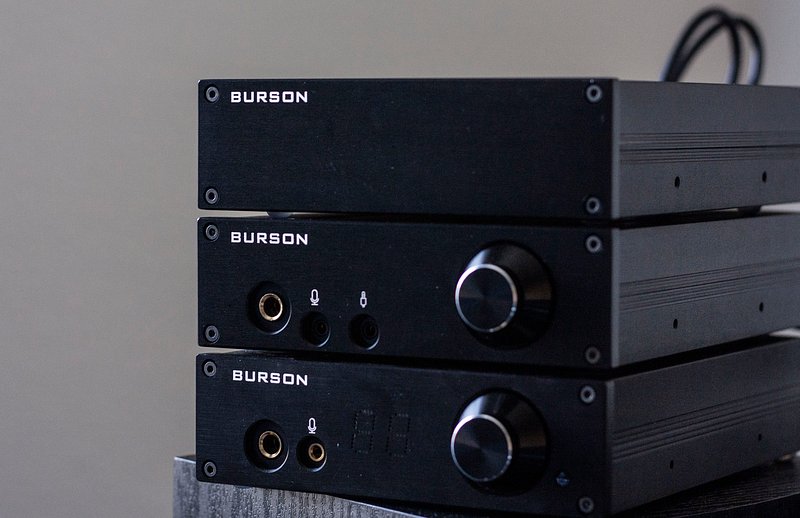
Burson builds audiophile-grade DACs and amps. Based in Australia, they use their technical expertise to build high-grade amplification and source devices nearly entirely out of discrete components, a trait that Burson says improves the performance of their products. They’ve recently released the Fun, a premium headphone amp, and the Bang, a 40W class A/B speaker amp. So now its actually possible to have a complete Burson source stack, from the DAC to the pre-amp, to the speaker amp. Let's see how well all this tech works!
You can find the Bang for sale here, for $499-$599. The Fun can be found here for $299-$399, depending on the configuration options you choose. You can also purchase them as a bundle and save some cash!
About My Preferences: Heads up, I’m a person! As such, these words are my opinion, and they are tinged by my personal preferences. While I try to mitigate this as much as possible during my review process, I’d be lying if I said my biases are completely erased. So for you, my readers, keep this in mind:
- My ideal sound signature would be an extended sub-bass with a leveled, but textured, mid-bass.
- I have a mild treble sensitivity.
- Motherboard -> USB -> Burson Play -> Burson Bang-> JBL 990X
- Motherboard -> USB -> Burson Play -> Burson Fun -> Headphones
- Motherboard -> USB -> Burson Play -> Burson Fun -> Burson Bang -> Headphones
Tech Specs
Bang:
- Input impedance: 100 KOhms
- Frequency response: ± 1 dB 0–20Khz
- Power Supply: 100–240V AC (12V 10A)
- THD: <0.03%
- Output impedance: 1.5 Ohm @ 1 kHz
- Signal-to-Noise Ratio: 92.5dB
- Inputs: 2x RCA (2V RMS line level)
- Outputs: 2x Speaker Outputs

- Input impedance: 38 KOhms
- Frequency response: ± 1 dB 0–35Khz
- THD: <0.03%
- Power Supply: 100–240V AC (12V 6A)
- Output impedance (Head Amp): 6 Ohm
- Output impedance (Pre Out): 25 Ohm
- Inputs: RCA (2V RMS line level), Mic Input
- Outputs: RCA Pre-Amp / Headphone Jack / Mic out

Performance and Pairing
I tested the Fun and the Bang independently, and together. I found that not only are they capable of pairing well with a variety of other source equipment, they were also in perfect sync when paired with each other (and of course a Burson Play as a DAC).
Bang:
Amps these days are moving away from high-wattage, large dissipation, setups and more towards compact medium-wattage form-factors. The Bang fully encompasses this. Even at 40W I found it to be more than enough to feed my Pioneer bookshelf speakers and even my vintage JBL LXED990s (which are rated for 200W). And much like its sibling, the Bang is very transparent. It does a great job of capturing and conveying the dynamics of the music being played through it and avoids and coloring or interference with your music. And like the Play, the Bang has swappable opamps for you to tune it to your preferences.
Fun:
The Fun is an absolute pleasure to use. It handles both higher-sensitivity headphones like the Meze 99 Classics and more power-hungry headphones like the Advanced Sound Alpha with grace. It exhibits top-notch dynamics and an intensely transparent sound signature that leaves you with nothing more than what the producer’s intentions. The Fun has a low noise floor too, so don’t worry about any background hiss on most of your headphones. Of course, very sensitive ones and IEMs may produce some background noise, but I found it to not be particularly distracting either way. I’d expect no less from a Class A amplifier. Like its siblings, the Fun has swappable opamps, and as such, is incredibly versatile. Tune it to your exact preferences!
Packaging / Unboxing

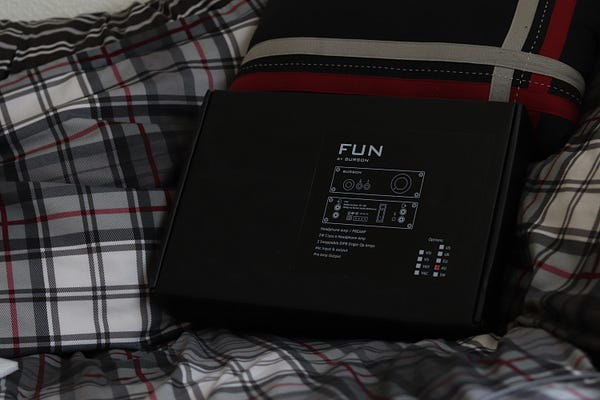
Build
Construction Quality
Bang:
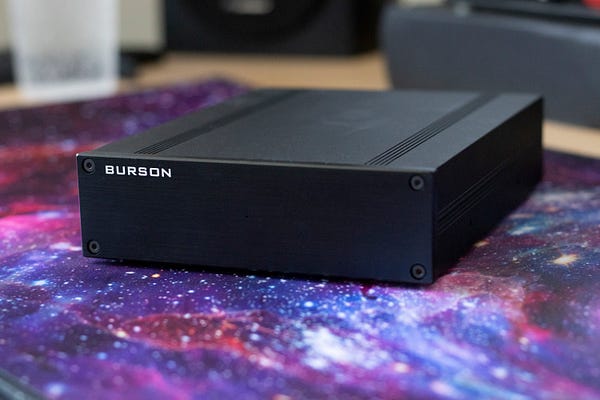
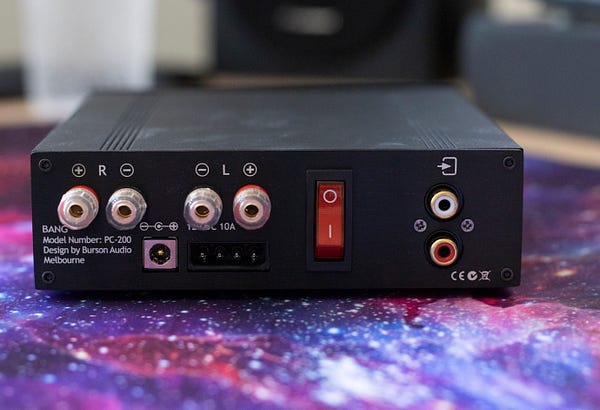
On the rear of the chassis, you’ll find the good stuff: the two speaker-wire outputs and two RCA inputs. The connectors all sit very firmly and don’t have any wiggle. The Bang’s speaker wire connectors are of the twist variety and have screw-on caps that need to be loosened to reveal the port where the wire goes. I found that on both the Bang units I tested these caps were screwed on too tight to adjust at first and needed to be loosened using pliers. I also noticed that the wire ports underneath the caps are all rotated at different angles. This doesn’t cause any problems, per say, but is certainly annoying when wiring up the Bang. Note: the Bang is a class AB amp, and as such, is designed to run hot. Since I don’t really touch it while it’s operating this isn’t an issue for me, but just don’t be surprised.
One thing that I did miss from the Bang is a sub-woofer output. As it stands, without using and janky splitters, the Bang is only good for powering two bookshelf speakers. If you, like me, are using a system with any more speakers than that, be prepared to come up with some creative solutions to get everything connected up. So to that end, Burson, please add either another set of speaker outputs or at least a subwoofer RCA output.
Fun:
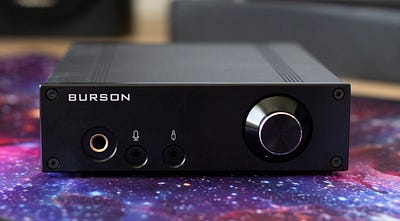

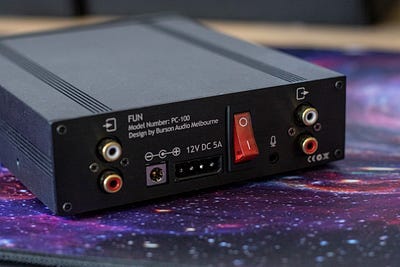
I did not ever run out of power with the Fun and rarely ever used even half of its capabilities. Based on the info from Burson’s website regarding the Fun’s amplification abilities, you should be fine no matter what headphone you plan to use with it.
Accessories
Inside the box you’ll find:
Bang
- 1x power supply
- 1x 2.5mm hex key
- 2x male RCA to male RCA
- 2.5mm hex key
- 1x power supply
- 1x 6.5mm to 3.5mm Socket Adaptor
The Fun and Bang are two outstanding products. They perform very well against their peers and have a no-nonsense approach to their design. The small form factor is a huge plus to people who don’t have a lot of desk space, and the pre-applied rubber feet on the bottom of both devices is a nice touch. With a couple QOL modifications here and there the Fun and Bang can become even better. So Burson, definitely keep it up! We’re expecting great things from you!
Last edited:


